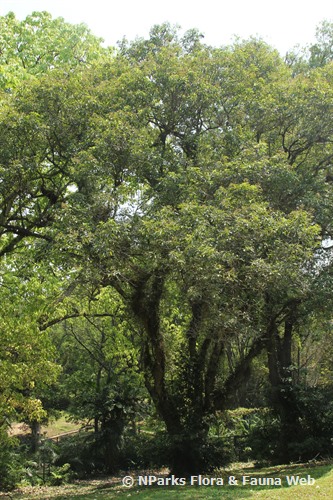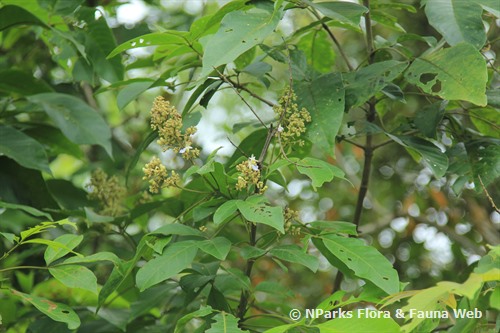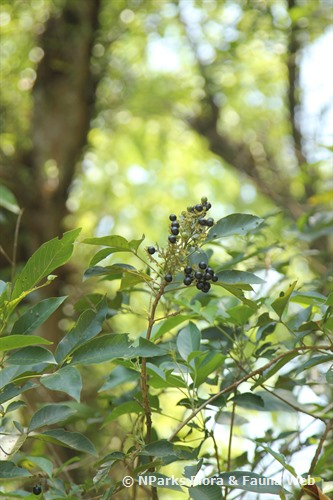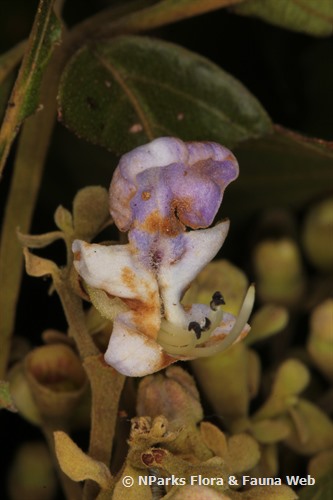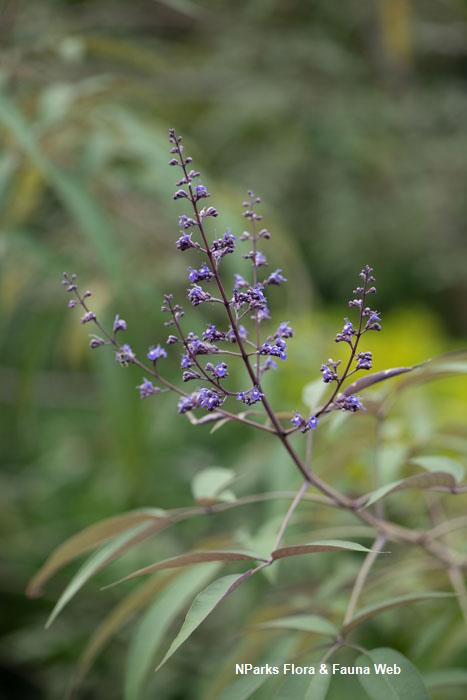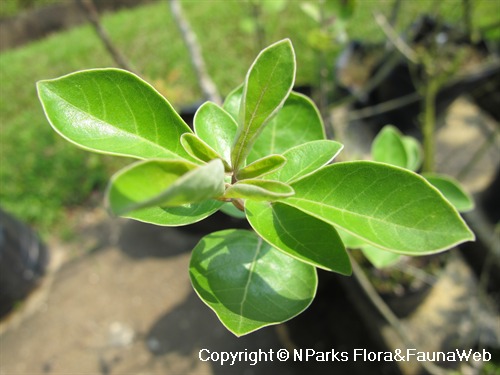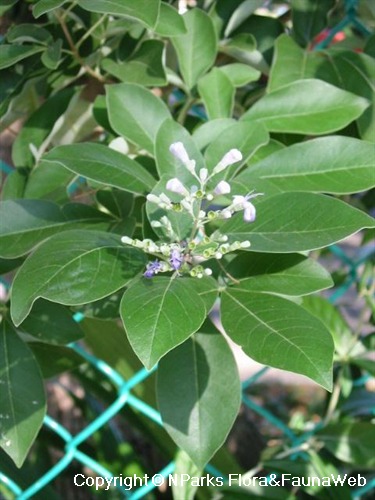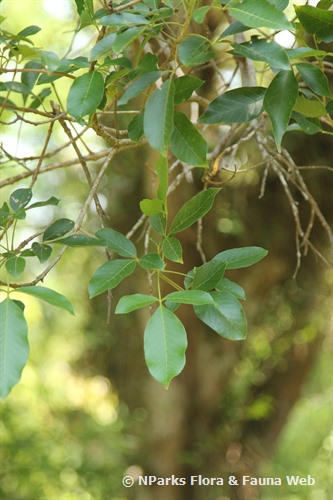
Back
Vitex pinnata L.
| Family Name: | Lamiaceae (Labiatae) |
| Synonyms: | Vitex arborea |
| Common Name: | Leban, Malayan Teak, Vitex, Halban, Leban Buas, Leban Papa, Leban Tandok |
Name
Classifications and Characteristics
| Plant Division | Angiosperms (Flowering Seed Plants) |
|---|---|
| Plant Growth Form | Tree |
| Mode of Nutrition | Autotrophic |
Biogeography
| Native Distribution | From India, Sri Lanka, Myanmar, Thailand, Cambodia, Peninsular Malaysia, Singapore to Philippines, Sulawesi and Lesser Sunda Islands. |
|---|---|
| Native Habitat | Terrestrial |
| Preferred Climate Zone | Tropical |
| Local Conservation Status | Native to Singapore (Least Concern (LC)) |
Description and Ethnobotany
| Growth Form | Tree is 1 – 15 m (rarely 25 m) high with 10 – 45 cm (rarely 120 cm) dbh. Bark is yellowish grey or light brown, smooth to flaky and sometimes fluted. |
|---|---|
| Foliage | Leaf is compound, usually with 3 leaflets (sometimes 1 – 5 leaflets). Central leaflet is elliptic (8.2 – 24 cm long and 3 – 9 cm wide) while side leaflets are smaller. Leaves have yellowish green hairs which become more obvious when dried. Glands are present on the underside of leaves. |
| Flowers | Inflorescence (8 – 20 cm long) comprise of many small flowers. Each flower (about 8 mm diameter) have 5 white to violet petals which are fragrant. Leaf-like bracteoles (7 – 15 mm long and 6 mm wide) are present. Calyx is yellowish to brownish green, 5- lobed and has flatten hairs. |
| Fruit | Fruits are purplish black (about 8 - 15 mm diameter), round, shiny and fleshy with seeds enclosed in stone hard endocarp. |
| Habitat | Found in primary, secondary forests and peat swamps, usually along water bodies. |
| Associated Fauna | The fruits are eaten by birds. |
| Cultivation | Seeds do not germinate in the shade. |
| Etymology | 'Pinnata' is latin for feather-like. |
| Ethnobotanical Uses | Cultural / Religious:
Heritage Tree :
There is currently one individual of Vitex pinnata listed as a Heritage Tree in Singapore. It can be found on Sentosa. To find out more about these trees, please visit the Heritage Tree Register.
Others: In Sarawak, the leaves and bark are used in traditional medicine to treat stomach ache, to expel intestinal worms and to treat wounds. |
Landscaping Features
| Desirable Plant Features | Fragrant |
|---|---|
| Landscape Uses | Parks & Gardens |
Fauna, Pollination and Dispersal
| Fauna Pollination Dispersal Associated Fauna | Bird-Attracting, Bee-Attracting |
|---|---|
| Pollination Method(s) | Biotic (Fauna) |
Plant Care and Propagation
| Light Preference | Full Sun |
|---|---|
| Water Preference | Moderate Water |
| Plant Growth Rate | Moderate |
Foliar
| Mature Foliage Colour(s) | Green |
|---|
Floral (Angiosperm)
| Flower Colour(s) | Cream / Off-White |
|---|---|
| Flower Grouping | Cluster / Inflorescence |
Fruit, Seed and Spore
| Mature Fruit Colour(s) | Black, Purple |
|---|---|
| Mature Fruit Texture(s) | Smooth, Glossy / Shiny |
Image Repository
Others
| Master ID | 31233 |
|---|---|
| Species ID | 5628 |
| Flora Disclaimer | The information in this website has been compiled from reliable sources, such as reference works on medicinal plants. It is not a substitute for medical advice or treatment and NParks does not purport to provide any medical advice. Readers should always consult his/her physician before using or consuming a plant for medicinal purposes. |

